Cucumbers tend to be sensitive and borderline dramatic when it comes to being transplanted. They like to die, and we want to avoid that! There are a few key components to having a successful transplant, so let’s dig in!
To transplant cucumbers, avoid damaging the roots, & keep them well watered to avoid transplant shock. The outside temperature & soil must be consistently over 65℉, & the seedlings should be hardened off. Plant seedlings in holes 1-2 inches wider than their current pots, & 12 inches apart.
Temperature and moisture levels are important to having a successful transplant, but there is a little more to it than that. In this article I will share with you some helpful tips and important steps to take in order for you to make the most of your cucumber season!
When Can You Transplant Cucumbers
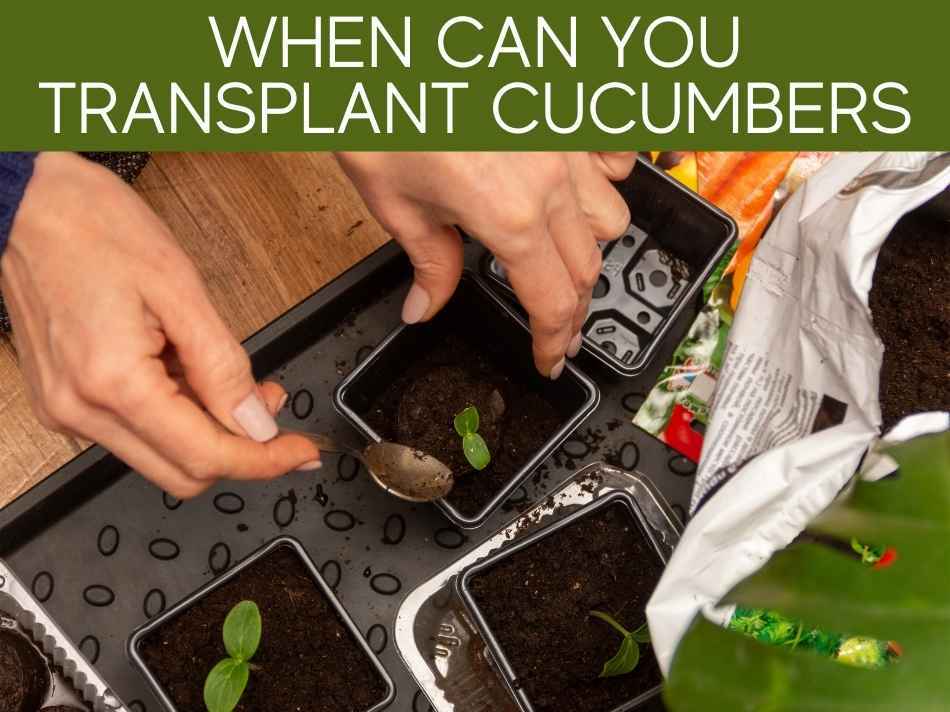
When transplanting cucumbers you need to be extremely mindful about the temperature outside.
If you transplant your cucumbers too early when there is still a chance of frost, they will most likely die.
Wait to transplant your cucumber seedlings until the weather and soil is consistently 65℉ or higher. Your seedlings should be matured and hardened off before transplanting.
For most of us, this will be around late May to early June and when our seedlings are 3-4 weeks old.
Starting your cucumbers 2-3 weeks before the last frost will mean that they’ll be ready to transplant around the same time as the weather will be ready to receive them!
The seedlings will be ready to transplant about 3-4 weeks after sowing, which should line up to be 2-3 weeks after the last frost.
You’ll know your seedlings are mature enough to transplant when they have 2-3 true leaves on them.
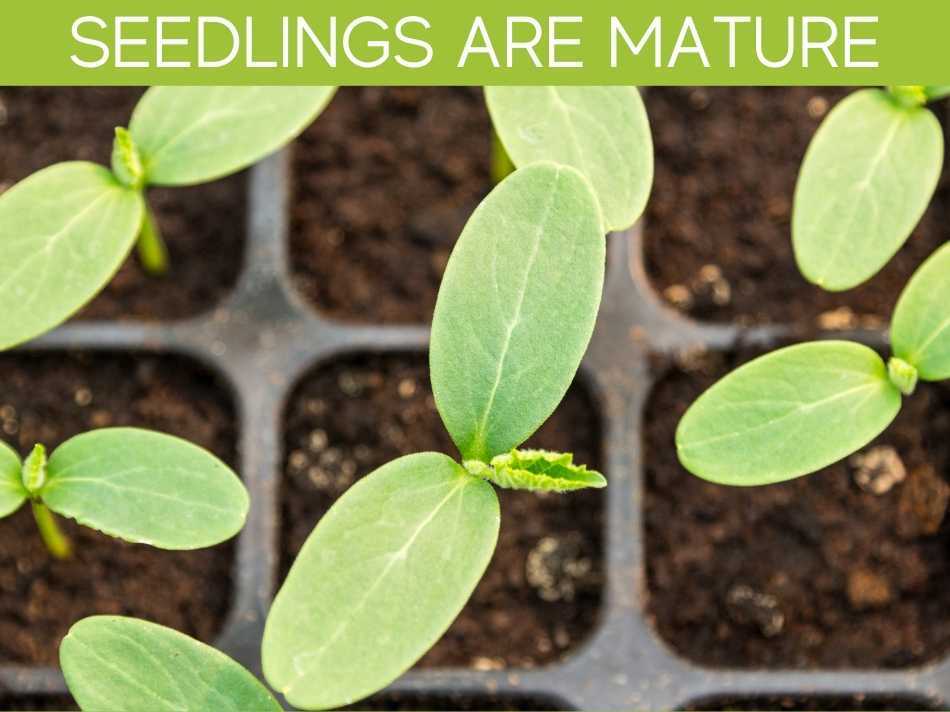
After the final frost, you can begin to prepare your soil outside so that it’ll be ready to receive your delicious little seedlings!
Work up the soil, and add compost or rotted manure to the top 2 inches. Mix thoroughly.
You can also put plastic garbage bags over your garden plot to help trap heat and warm the soil up deeply.
During this time it’s also a good idea to harden your seedlings, because they need to get used to their new environment.
It’s important when hardening your seedlings to not expose them to cold temperatures (below 60℉).
Begin exposing your seedlings to outside temperatures (at least 60-70℉) for a few hours each day, extending that time over the course of a week before transplanting.
This will help your seedlings have stronger stems and leaves, and be less likely to “bite the dust” from transplant shock.
How To Transplant Cucumbers
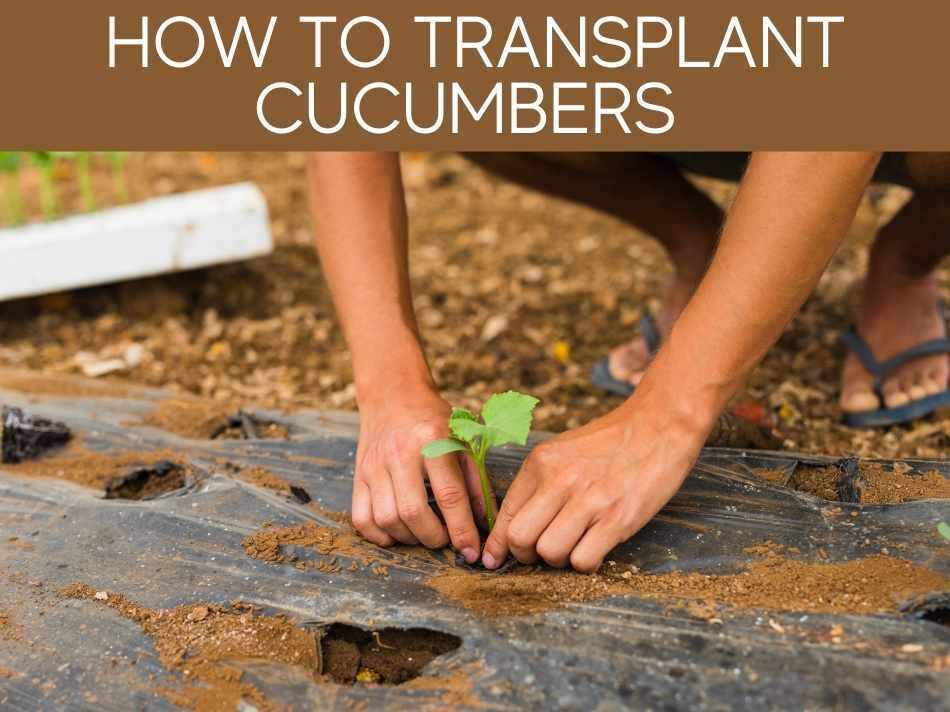
Transplanting cucumbers is not much different than transplanting other seedlings, except that they are much more sensitive.
To transplant cucumbers you must remove the cucumber carefully from its current container and plant into warm, nutrient rich soil.
It is extremely important not to damage the roots, and to handle them as little as possible.
Disturbing the roots too much will likely end in your cucumber dying from transplant shock.
Sowing your seeds into individual peat pots will help keep the roots safer when it comes time to transplant.
Peat pots will contain the roots of each seedling, and you won’t need to dig them up or squeeze them out since you can plant the peat pot directly into your garden!
Before you transplant your cucumbers, ensure you have done the following things to their new outdoor dwelling.
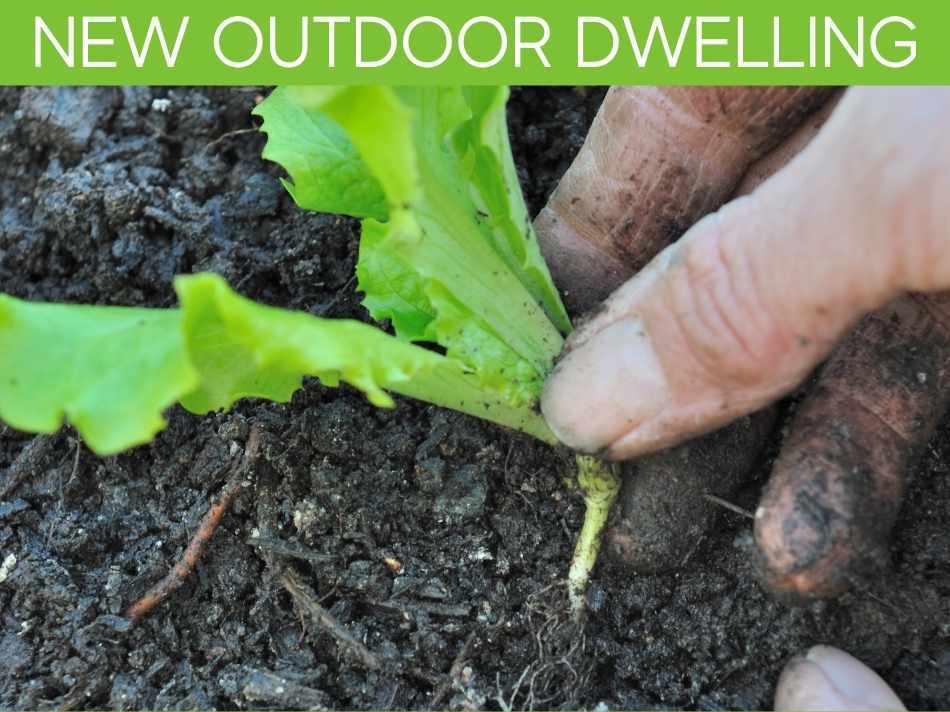
- Checked that the soil temperature is 65℉ or above, and there is no risk of frost
- Loosened the soil in the garden plot
- Added compost the top 2 inches of soil
- Saturated the new garden plot
- Placed trellises if you are using them
Now that your seedlings’ new home is ready, you must also get your seedlings ready themselves!
Your seedling is ready to transplant when
- It has 2-3 true leaves
- It’s been hardened off
- You’ve made sure it has well-watered soil
Having well saturated soil will make the removal of the peat pot more gentle on the cucumber seedlings roots.
Hardening Off
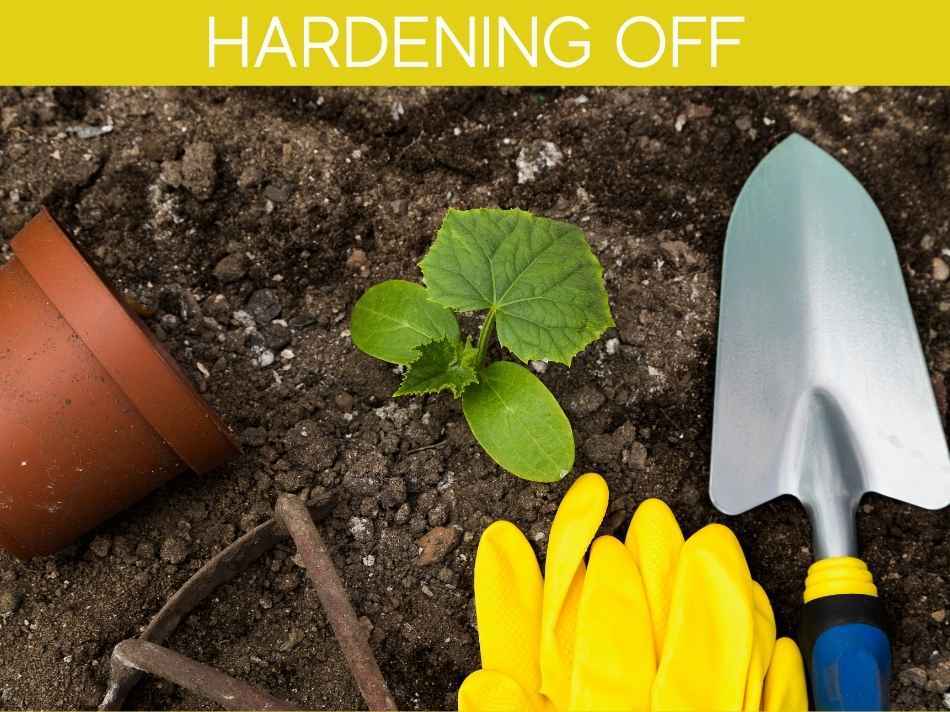
When preparing to transplant seedlings it is necessary to “harden them off” to get them used to the outdoors.
1-2 weeks after the final frost you can begin to bring your cucumber plants outside and slowly introduce them to the new environment, this is called hardening off.
Begin the hardening off process about a week before you plan to transplant, your seedlings should have 2-3 true leaves (about 3 weeks old).
This is a weaning process, and it must be done carefully if you want to have a successful transplant!
Here is a sample schedule to harden off your seedlings, but watch your plants for wilting or other signs of stress!
If you need to take it slower that’s okay, just repeat a day and move on when they are ready.
- On the first day, pick a warm sunny day and place the seedlings outside in the shade, and bring them back in at night
- The second day allow them to be exposed to some sunlight, but a mostly shaded area and bring them inside for the night
- By the third day, allow them to be exposed to direct sunlight for several hours and leave them out at night
- On the fourth day you may transplant them to their permanent spot outside.
Check out the complete article on whether frost can damage cucumbers.
Steps to transplant cucumber seedlings
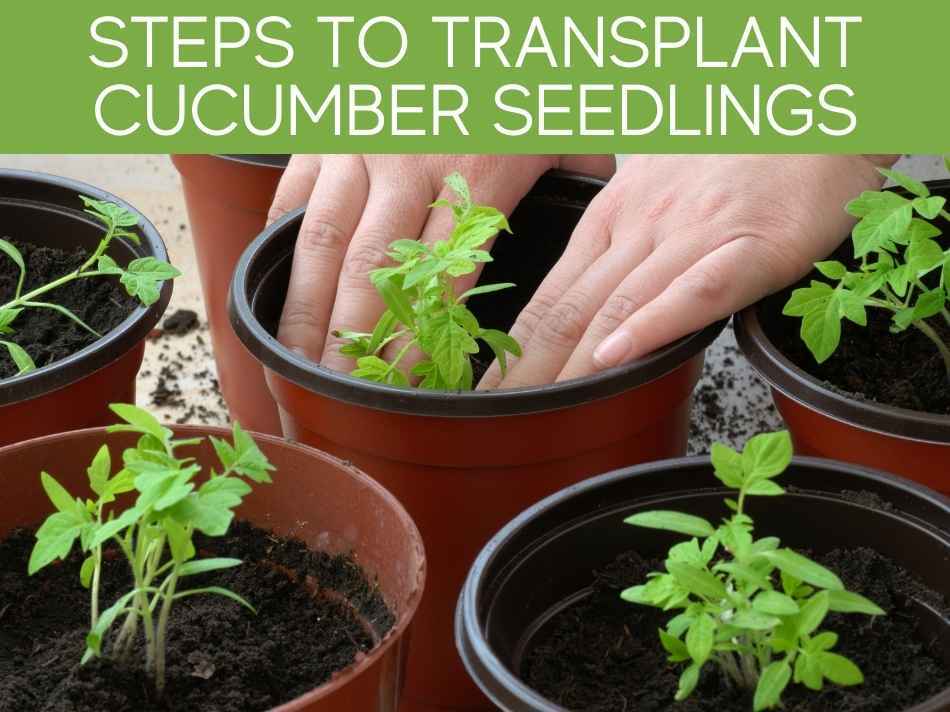
Now that your garden and your seedlings are properly prepared, here is how you will successfully move your seedlings to their new home!
- Soak the bottom of the seedlings peat pot in water and gently remove the bottom (unless the roots have already fully penetrated). If you don’t feel comfortable with this it is also okay to leave the bottom intact.
- Remove the top ½ -1 inch of pot to allow for proper water access.
- Dig a hole in your garden 1-2 inches wider and slightly deeper than your seedling.
- Place your seedling in the hole and loosely hill the soil around it, but don’t bury it! Using extra compost or mulch here is a good idea too.
- Place seedlings 12 inches apart, or 2-3 per hill.
- Give your new seedlings a good watering!
- Relocation accomplished!!
Check out our complete article on how far apart you should plant cucumbers & tomatoes.
When To Transplant Cucumber Plants Outside
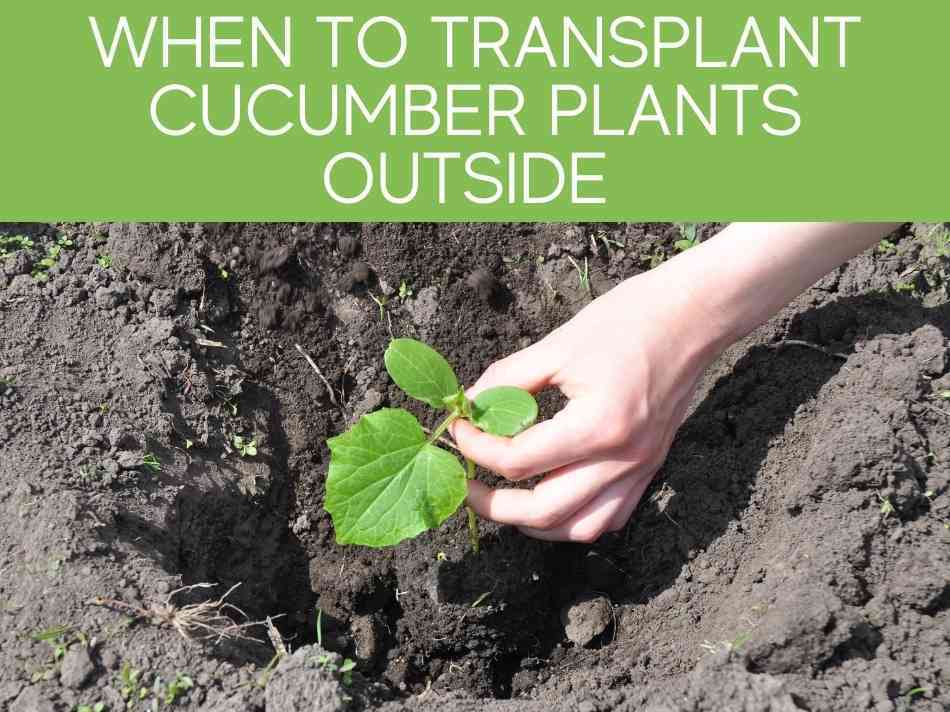
Although you might be antsy to get your cucumbers out into your garden, it’s important to wait for the right time!
Transplant your cucumbers outside when the weather and soil are above 65℉ and your seedlings have 2-3 true leaves.
Cucumbers are extremely sensitive to cold weather, and will die if they are exposed to frost!
Waiting to plant your cucumbers until 2-4 weeks after the final frost gives them the best chance of survival.
While you are waiting for the soil to warm up, there are a few things you can do to speed up the process and get it ready to receive your babies!
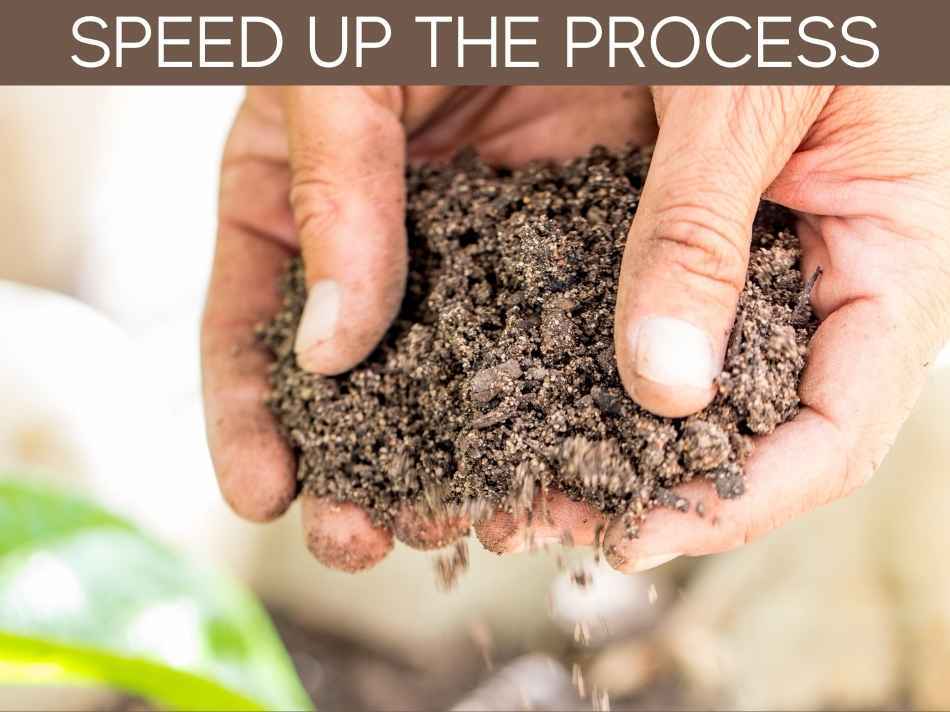
- After the final frost till the soil in your garden where you plan to plant your cucumbers.
- Add compost to the top 2 inches of soil.
- Cover the garden with plastic garbage bags to trap in heat.
- This will maximize the daylight heat and help it to penetrate deep into the soil.
It is important that you add compost to your garden plot, since your delicious little seedlings will be heavy feeders!
Your cucumber seedlings are ready to be relocated at about 3-4 weeks old.
Cucumber seedlings are mature enough for transplanting when they develop their third true leaf.
You don’t want to wait too long to transplant your cucumbers because if they get too mature they are more likely to suffer from transplant shock!
Cucumber Transplant Shock
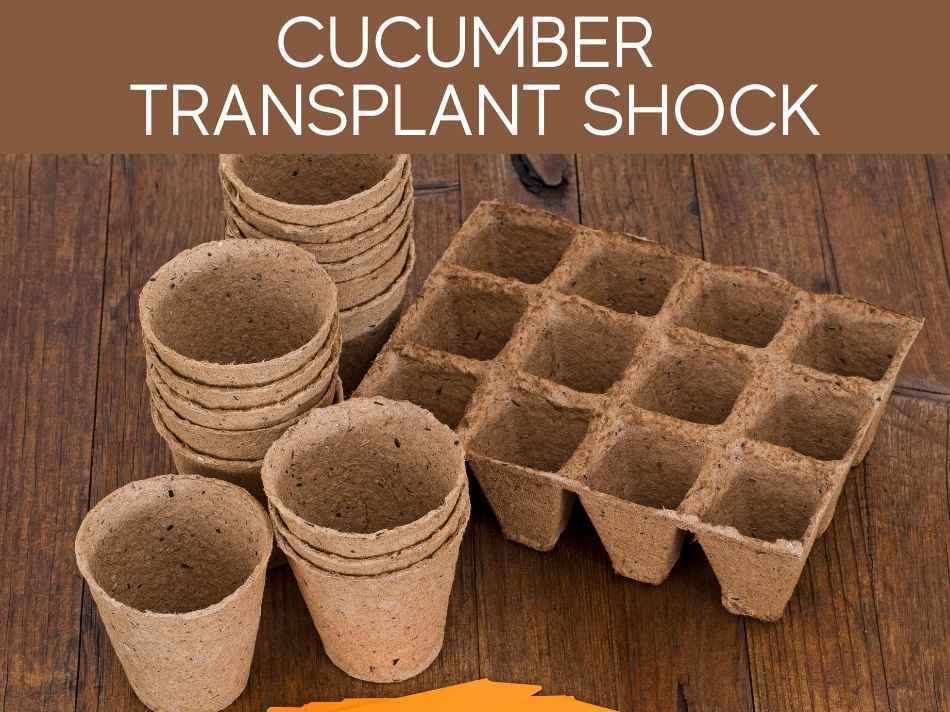
Cucumbers are a lovely summer treat, and generally are pretty simple to grow!
However, if you are trying to maximize your harvest, and so plan to start your first set of plants indoors, you must be aware of transplant shock.
Transplant shock occurs frequently in cucumbers, and it is the sudden death of a plant after transplanting. The factors that most commonly contribute to transplant shock are damaged roots, new soil temperature being below 65℉, and the seedling not being used to direct sunlight.
The first step you can take to avoid transplant shock is to sow your seeds into peat pots rather than regular plastic seedling trays.
- Peat pots are biodegradable and do not require handling of the roots when it comes time to transplant.
- You may remove the bottom of the peat pot carefully at transplant time by first soaking it well in water.
- This step will help your seedling reach the new rich soil faster, but if you are worried about being too rough, it is not necessary.
About one week before you plan to transplant your seedlings you should begin to “harden them off”.
Hardening off is essentially a weaning process for your cucumbers.
To harden off your seedlings, place them outside each day, gradually increasing the amount of time they spend outside in the shade, then the sunlight, then the cool nights.
Remember that cucumbers want to die in the face of change!
Be slow, patient and careful when transplanting your seedlings to avoid a sudden dramatic death.
How Deep To Plant Cucumber Seedlings
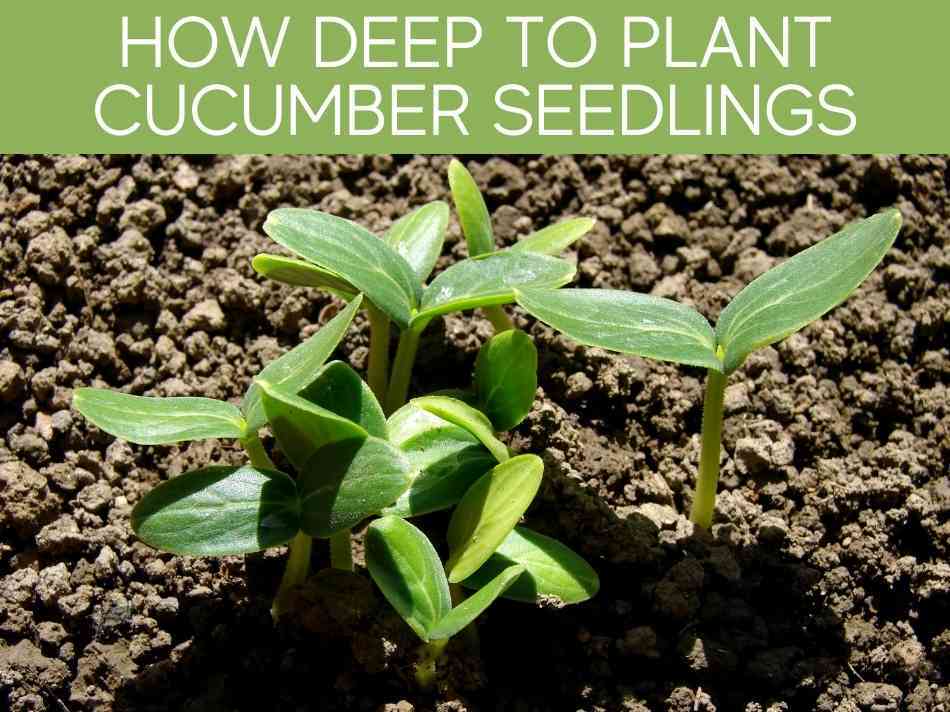
You are getting ready to relocate your cucumber seedlings to their new home, and you have everything ready for them!
But how deep should you plant your cucumber seedlings?
Plant cucumber seedlings in holes 1-2inches wider and slightly deeper than their current pots. Do not bury the new seedling, keep the new soil level with the seedling’s current soil.
You don’t need to be exact when it comes to planting your new seedlings, just be careful not to dig too deep!
- Simply dig a hole with your hand or your garden shovel that is slightly deeper and wider than your seedling’s peat pot.
- Place your seedling in the hole and gently fill around it with soil and compost.
- You can add some soil and mulch on top of your cucumber’s pot soil, but just a thin layer will do!
If you plant your little seedling too deep it will struggle to access the water and nutrients in it’s new home, and it’s leaves will not like being in the dirt!
You might also want to check out the full article on how deep to plant cucumber seedlings.
Don’t overthink it, just don’t bury it!
